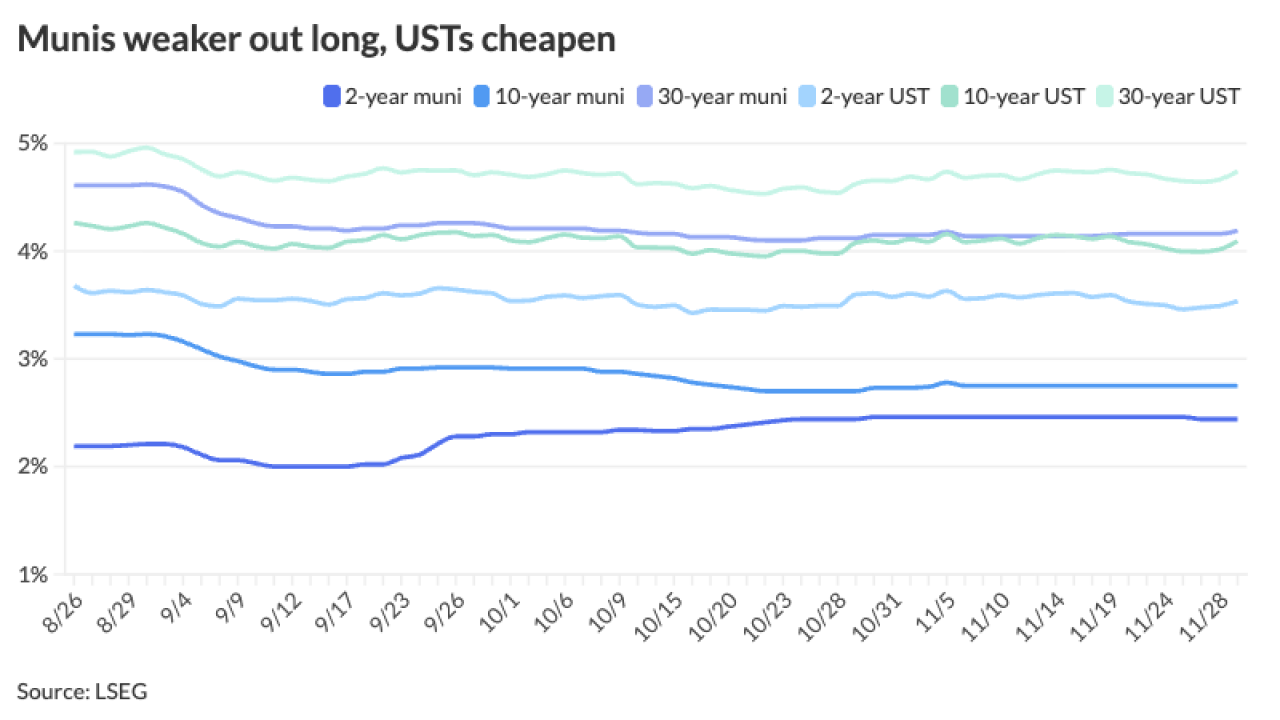COVID-19 pressures continue to affect transit systems with ridership losses and work-at-home dynamics providing uncertainties.
Many transit systems are bracing for permanent ridership and revenue drops even after the pandemic recedes.
Moody’s Investors Service, which studied the finances and ridership patterns of four of the world’s largest mass transit systems, said a 20% ridership decline would lead to an 8% revenue loss for New York’s Metropolitan Transportation Authority.
Still, Moody's on Tuesday revised its outlook on the MTA's primary transportation revenue bond credit to stable from negative while affirming its A3 rating. The move affects $25 billion of debt.
Moody’s said London’s Underground, or Transport for London, would fall 12% with that drop, while Paris’ Métro, or Ile de France Mobilités and Vancouver’s TransLink, or South Coast British Columbia Transportation Authority, would also experience an MTA-like 8% drop. The smaller declines reflect more diverse revenue sources.

“Without a durable increase in funding from higher-tier governments or new revenue sources, mass-transit systems’ credit profiles will weaken,” Moody’s analyst Baye Larsen said. Moody’s rates TfL A1, while Paris Métro and TransLink receive Aa2 ratings. The outlooks on the three are negative.
Moody's, in its outlook revision, cited significant improvement in MTA's budget flexibility and liquidity position over the next 18 to 24 months, due to substantial federal aid for coronavirus relief and recovery.
"However, we expect that once federal aid has been exhausted, MTA's significant budget pressures will return due to the slow, incomplete ridership and revenue recovery, unless it makes material adjustments to better match its operations to future revenue levels," Moody's said. Out-year budget gaps, Moody's added, will be challenging to resolve without further weakening financial and debt metrics, or jeopardizing MTA's service delivery and capital plans.
Based on current expectations around vaccine delivery and the associated control of the pandemic, Moody's expects some recovery this year, but for demand to remain on average around 40% below pre-pandemic levels.
The state-run MTA, one of the largest municipal issuers, is in store for $6.5 billion under the American Rescue Plan, the latest federal aid package. In addition, federal officials said they would advance a
Domino effects resonate beyond the bottom lines of transit agencies, said municipal bond analyst Joseph Krist.
“It is clear that in terms of office occupancy, status quo will likely never return,” Krist said. “The implications for commercial real estate values and tax generation potential are significant.”
They could include increased appeals of valuations, increased delinquencies and probably lower valuations, Krist said.
An Illinois Economic Policy Institute study revealed that the motor fuel tax, that state’s most significant source of transportation funding, lost $308 million between April 2020 and February 2021 as the pandemic took hold. Krist said the collective farebox revenue from the Chicago Transit Authority subway, Pace bus and Metra rail systems generated $645 million less in 2020 compared with 2019.
TfL’s commissioner is
“My message to our leaders is: Don’t see transit as part of the problem,” he told Time magazine. “It’s part of the pathway out of the pandemic.”





